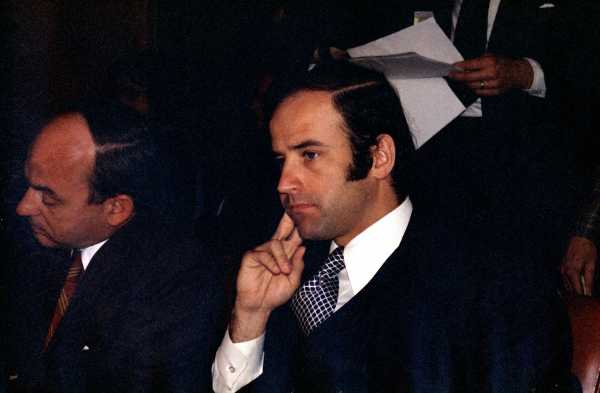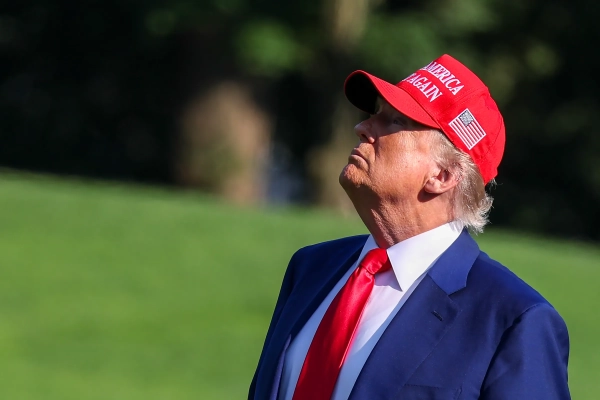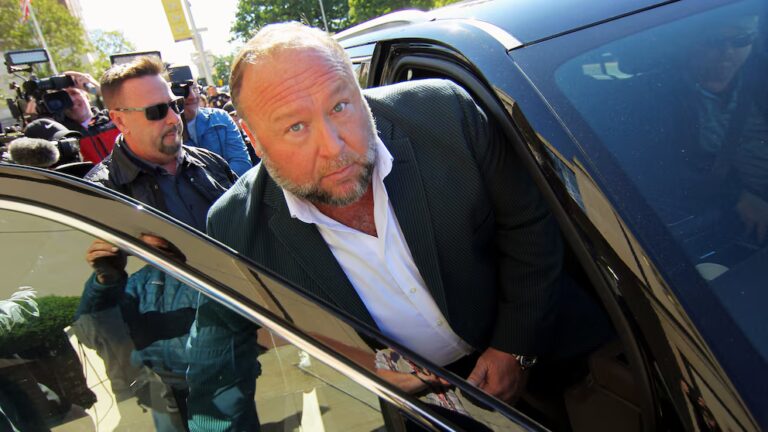
The second round of the first Democratic primary debates on Thursday included a revealing — and at times tense — discussion of race between several candidates. But a defining moment was when Sen. Kamala Harris took former Vice President Joe Biden to task over his recent comments about segregationist senators, as well as his opposition to using federally mandated busing to racially integrate schools in the 1970s. She pointed directly to how it affected her life as a young child.
“You also worked with [those segregationist senators] to oppose busing,” Harris said, speaking directly to Biden. “And there was a little girl in California who was part of the second class to integrate her public schools and she was bused to school every day. And that little girl was me.”
“I did not oppose busing in America,” Biden responded. “What I opposed is busing ordered by the Department of Education. That’s what I opposed.”
In raising busing specifically, Harris hit on a part of Biden’s record that Biden hasn’t really discussed publicly. And as Vox’s Ella Nilsen reported on Thursday, his campaign swiftly moved to push back on Harris’s argument, issuing a statement that Biden’s busing stance had been misrepresented at the debate.
“When Biden said it wasn’t true that he supported anything that would have stopped the busing program that impacted her, he was correct,” the Biden campaign said. “None of [Biden’s] votes would have negatively impacted the Berkeley School Busing Program.”
Since the debates, Harris, as well as Sen. Cory Booker, has continued to press Biden on the issue, saying that his stance is troubling given how many states had to be forced into following civil rights rulings and legislation. “I literally leaned back in my couch and couldn’t believe that one moment,” Booker, who participated in the debates on Wednesday, said of Biden and Harris’s exchange during a CNN interview on Friday.
“I think that anybody that knows our painful history knows that on voting rights, on civil rights, on the protections from hate crimes, African Americans and many other groups in this country have had to turn to the federal government to intervene because there were states that were violating those rights,” he added.
In an election cycle where Democratic candidates have issued a flurry of policy proposals that are far more progressive than previously seen, these critiques of Biden are clearly intended to make a broader point: that the former vice president, in continuing to defend his stance on busing, is out of step with the current Democratic electorate on issues of race and fighting racism. And that could be an issue for many of the black voters Biden is counting on for support.
In reality, though, things are more complicated. In polling, there’s been little indication that white attitudes about busing have changed all that much from when Biden was a young US senator. Opposition to actions that would forcefully desegregate America’s increasingly segregated schools remains high in places like New York City, for example, where white parents have opposed some proposals to diversify schools.
It suggests that Biden’s view — that desegregation is an important goal, but the federal government should only intervene in cases of segregation deliberately created by policy — might not be a problem for many voters.
But even if Biden’s stance aligns with part of the electorate, this part of his record, and his current struggle to defend it — still reveals important details about how Biden approaches larger issues of fighting racism. And it suggests that even as Biden leads the field, his record opens him up to criticism from other candidates, particularly when it comes to race.
America’s history of busing, explained
When the Supreme Court’s 1954 ruling in Brown v. Board of Education found school segregation unconstitutional, schools had to begin the process of integrating. But due to high amounts of state-sanctioned residential segregation and many cities and states’ outright refusal to integrate, the courts and the federal government had to intervene.
There were a number of ways to address this issue, but the one that caught public attention most was “busing” — a process where black students were driven to predominantly white schools in neighboring communities, and white students were driven to predominantly black ones. Many busing orders were mandated in the late 1960s and early 1970s after civil rights groups like the NAACP filed — and later won — school desegregation lawsuits.
Busing was often used as a last resort for cities and districts that clearly showed little interest in desegregation. It was used to immediately integrate schools in the hopes of not only ending state-sanctioned segregation of blacks and whites, but to also give black and white students equal access to resources and opportunities. Many of these opportunities had been isolated to white schools in white communities. Predominantly black and Latino schools, meanwhile, struggled with overcrowding, outdated materials, and dilapidated buildings.
But busing — one of many tools used to secure black students’ constitutional right to equal education — was often strongly opposed by white parents, many of whom did not want their children in integrated schools. Some parents and lawmakers stated that outright, others used different anti-busing arguments: saying that long bus rides to different schools were burdensome, and that their children were being placed in lower-quality schools (ignoring that schools in predominantly black neighborhoods had fewer resources and that per capita spending on black students was smaller).
Parents also claimed that “forced busing” wouldn’t work to bring about racial equality and would merely function as quotas. (To be fair, there were black people who also criticized busing, but their opposition was complex, and contrary to white Americans, their critiques of busing and the political attention it received were not rooted in a desire to maintain segregation, but rather a hope to see deeper investment in black schools and communities.)
Busing programs weren’t opposed just in Southern states. In fact, they were often met with even more resistance in the North due to the region’s avoidance of civil rights issues and efforts to claim moral superiority over the South. Busing was heavily criticized in Detroit, for example, where white families boycotted it in 1960 and continued to oppose it in the years after. In Boston, politicians campaigned and won on anti-busing platforms, arguing that black students’ struggles to access a quality education and succeed in schools were not affected by segregation, but were instead the result of pathology. The city also saw a series of violent riots in the 1970s after schools were ordered to desegregate by a court.
As opposition continued, anti-busing proponents argued that their criticism of busing was not opposition to school desegregation as a whole. But it was also true that in districts that had been the most resistant to integration, the absence of busing programs would leave many schools segregated.
Critics of busing were assisted by lawmakers and legislators who argued that Northern states weren’t segregated intentionally but were rather just “racially imbalanced,” a framing that ignored how policy in many of these states was used to keep white people separated from African Americans.
Here’s how Matthew Delmont, a Dartmouth historian and author of Why Busing Failed: Race, Media, and the National Resistance to School Desegregation explained things in a 2016 Atlantic article on the history of opposition to busing in Boston:
“Describing opposition to busing as something other than resistance to school desegregation was a move that obscured the histories of racial discrimination and legal contexts for desegregation orders,” Delmont added.
Still, even as cities like Boston protested busing, lawsuits led to Northern cities being subjected to busing programs in the late ’60s and 1970s. And in the mid-1970s, early into Biden’s first term as a US senator, a part of Delaware soon found itself facing the prospect of such an order.
Busing was one of the first issues to define Joe Biden’s early political career
In 1974, a federal court panel ruled that state housing and education policies had been used to keep the school systems of the city of Wilmington, Delaware (which was predominantly black), and its predominantly-white suburbs segregated. The court had not yet ruled that a busing program must be implemented, but white suburbanites still panicked over the prospect of having to follow a busing plan.
It presented a challenge for Biden, who had supported busing during his campaign a few years before. But in 1973 and 1974, Biden had begun to vote for anti-busing measures after feeling pressure from his constituents. However, in two key exceptions, he voted to table two anti-busing measures, killing their chances of moving forward in the Senate by one vote.

His constituents were outraged at those latter votes and, facing the looming prospect of a formal busing mandate in Delaware, pushed Biden to take a stronger stance on busing. Biden did so, going on to vote for eliminating policies that would provide federal oversight of busing.
In 1975, shortly after Boston residents protested and rioted over the city’s desegregation order, Biden came out in favor of an amendment introduced by North Carolina Sen. Jesse Helms, an ardent segregationist and white supremacist. Helms’s amendment would bar the then-active Department of Health, Education, and Welfare from collecting data about the race of students or teachers, and also prevented the department from requiring schools “to classify teachers or students by race.” Helms proudly announced that the measure would effectively end any federal oversight or enforcement of busing.
“I have become convinced that busing is a bankrupt concept,” Biden said as he stood to support Helms’s amendment. He added that the Senate should instead focus on “whether or not we are really going to provide a better educational opportunity for blacks and minority groups in this country.”
The Helms amendment was defeated, but Biden then introduced a similar amendment. Here’s how University of New Hampshire historian Jason Sokol described Biden’s proposal in a 2015 Politico Magazine article:
The measure passed, outraging Massachusetts Republican Edward Brooke, the only black person in the Senate. Brooke called the Biden amendment “the greatest symbolic defeat for civil rights since 1964.” Biden later introduced a second amendment that explicitly barred the Department of Health, Education, and Welfare from ordering busing, but left other integration measures intact.
The second amendment easily passed the Senate, but both of Biden’s proposals were stripped out of the bill later in the process.
In the years that followed, Biden would cast other votes and propose other anti-busing legislation. The New York Times recently described many of these votes:
And on Friday afternoon, NPR reported on a recently unearthed 1975 interview where Biden said that if legislation failed, he would be open to using a constitutional amendment to end mandated busing.
Busing would largely fall from the federal spotlight by the late 1980s, as fewer legislators actively pushed for measures supporting it. And Biden has maintained that his stance on busing was the right one, saying that he supports busing only when there is proof of intentional segregation in an area.
On Friday, the Biden campaign pointed to a quote Biden gave in 1975 explaining his stance. “In cases where a school system has racially segregated by gerrymandering district lines or by other legalistic means, Biden said he supports desegregation by any legal means at hand — including busing,” the Wilmington News Journal reported at the time. “However, for school districts which are all white or all black ‘because of historical pattern not involving segregation practices disapproved by a court’ he is against busing.”
But Sokol has said that Biden’s comments ignore the fact that by the 1970s the lines on the issue were not as clearly drawn as Biden says. “By that point in history, there were very few school districts voluntarily integrating by other means, which is why judges were ordering busing,” the historian told Politifact on Friday. “He is using disingenuous logic.”
Biden says his stance on busing isn’t controversial. His critics disagree.
Speaking to Vox on Friday, an adviser to the Biden campaign argued that Biden’s comments had been misconstrued to suggest that he opposed busing in its entirety, when he actually only opposed federal enforcement of busing in certain districts.
On Friday afternoon, addressing the renewed controversy over his busing record since the debates, Biden told the audience during an appearance at the Rainbow PUSH Coalition Convention in Chicago, “I want to be absolutely clear about my record and position on racial justice. I never, never, ever opposed voluntary busing.”
But for some, that claim is simply a distinction without a difference. “He wasn’t just a silent supporter of anti-busing, he was out there crafting bills,” Noliwe Rooks, a professor of Africana studies and director of American studies at Cornell University, told EdWeek recently. “As a standalone, [his opposition to busing] probably wasn’t going to be that big a deal. But when you put that in tandem with his more recent comments about these white segregationists, it’s a problem.”
While questions about Biden’s record on busing continue to circulate in the news, it’s still unclear if the issue will actually resonate with voters in general, or Biden’s base of black support in particular. But it is clear that Biden’s primary opponents see weakness in this part of his record, especially when coupled with the controversy over Biden’s recent comments about segregationist senators and his role in the passage of the 1994 crime bill. At times, discussion of Biden’s lead in primary polling has treated his campaign as if it was unstoppable. Harris showed on Thursday that he can be bruised.
Sourse: vox.com






